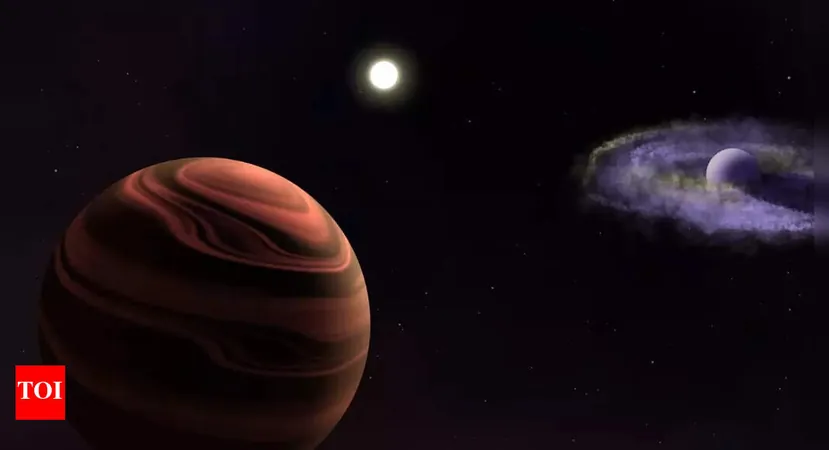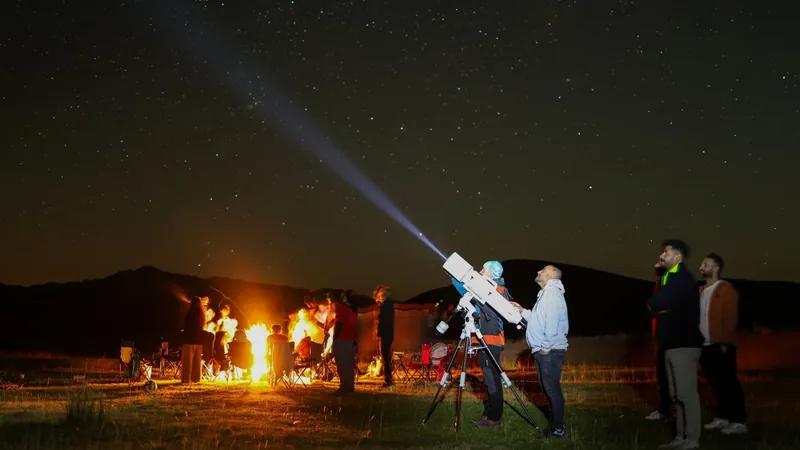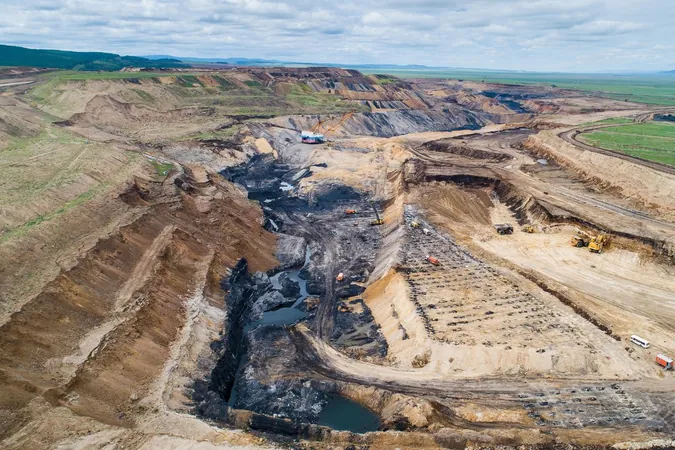
Mysterious Iron Rain: Astronomers Unveil Dark Clouds in the YSES-1 System
2025-06-15
Author: Sophie
A Cosmic Discovery: Thick Mineral Clouds Envelop YSES-1b
Astronomers have made a groundbreaking observation of dense, mineral-rich clouds, rich in iron, surrounding the young exoplanet YSES-1b. This exciting discovery raises the possibility of iron rain on this distant world. Located in the just 1 million-year-old YSES-1 system, which boasts two gas giants, this finding offers a unique opportunity to explore the intricacies of planet formation.
High-Altitude Clouds: A New Perspective on Exoplanetary Weather
The presence of thick slab clouds shrouding YSES-1b has captured the interest of scientists, who believe that these clouds are primarily composed of mineral dust, likely containing iron. As these clouds disperse, the potential for iron rain could reshape our understanding of exoplanetary atmospheres. This discovery not only illuminates the complex weather patterns of distant worlds but also raises questions about the planet's habitability.
Exploring the Young Star System: An Astronomical Laboratory
The YSES-1 system, situated a staggering 307 light-years from Earth, features two gas giants still in the throes of formation. Astronomers were thrilled to observe both planets through their telescopes. The outer planet, YSES-1c, is a colossal body approximately six times the mass of Jupiter. Meanwhile, the larger inner planet, YSES-1b, boasts a staggering mass of about 14 times that of Jupiter, surrounded by a massive disk of magnesium silicate dust and iron.
Expert Insights: Unveiling Planet Formation Mysteries
Dr. Kielan Hoch, an astrophysicist at the Space Telescope Science Institute, expressed her excitement: "There are only a handful of multiplanet systems that have been directly imaged, making them a unique laboratory to test our planet formation theories." She further noted that both planets remain bright and detectable due to their ongoing formation, shedding light on their gradual transformation.
The Enigma of Age: Why Is the Disk Still Present?
Adding to the intrigue is the continued presence of a surrounding dust disk despite YSES-1b's age of 16 million years. Current planet formation theories suggest that such debris should have settled long before this age, making the ongoing presence of these clouds a mystery worth investigating.









 Brasil (PT)
Brasil (PT)
 Canada (EN)
Canada (EN)
 Chile (ES)
Chile (ES)
 Česko (CS)
Česko (CS)
 대한민국 (KO)
대한민국 (KO)
 España (ES)
España (ES)
 France (FR)
France (FR)
 Hong Kong (EN)
Hong Kong (EN)
 Italia (IT)
Italia (IT)
 日本 (JA)
日本 (JA)
 Magyarország (HU)
Magyarország (HU)
 Norge (NO)
Norge (NO)
 Polska (PL)
Polska (PL)
 Schweiz (DE)
Schweiz (DE)
 Singapore (EN)
Singapore (EN)
 Sverige (SV)
Sverige (SV)
 Suomi (FI)
Suomi (FI)
 Türkiye (TR)
Türkiye (TR)
 الإمارات العربية المتحدة (AR)
الإمارات العربية المتحدة (AR)